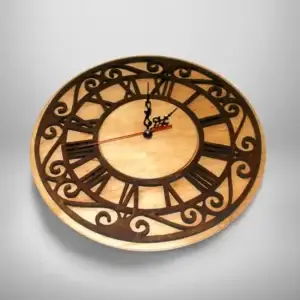Intarsia – a historical art
Intarsia is a centuries-old woodworking technique with roots dating back to the Renaissance. This unique style combines different types and shades of wood to create detailed, three-dimensional images. In classical techniques, pieces of wood are precisely cut and fitted together to achieve a harmonious and elegant final result.
There are various techniques in intarsia art, one of the most traditional being veneer intarsia. In this method, patterns are hand-cut from thin wood veneer and applied to a base surface, forming delicate, pictorial images. Veneer intarsia allows for detailed and refined pattern work, making it popular in decorating furniture and ornamental surfaces.
Today, in addition to craftsmanship, modern tools such as scroll saws and wood routers are used to create intarsia, enabling precise cutting and rich detailing. This technique produces three-dimensional artworks such as wall clocks, decorative panels, and unique shapes that enhance interior spaces and add a personal touch.
Each intarsia piece is unique, highlighting the natural beauty of wood and the artisan’s skill. Various wood types and veneers are used, with their natural colours and textures creating a warm and vibrant surface. Wooden intarsia pieces are works of art that blend tradition with contemporary aesthetics, bringing timeless elegance into a space.

